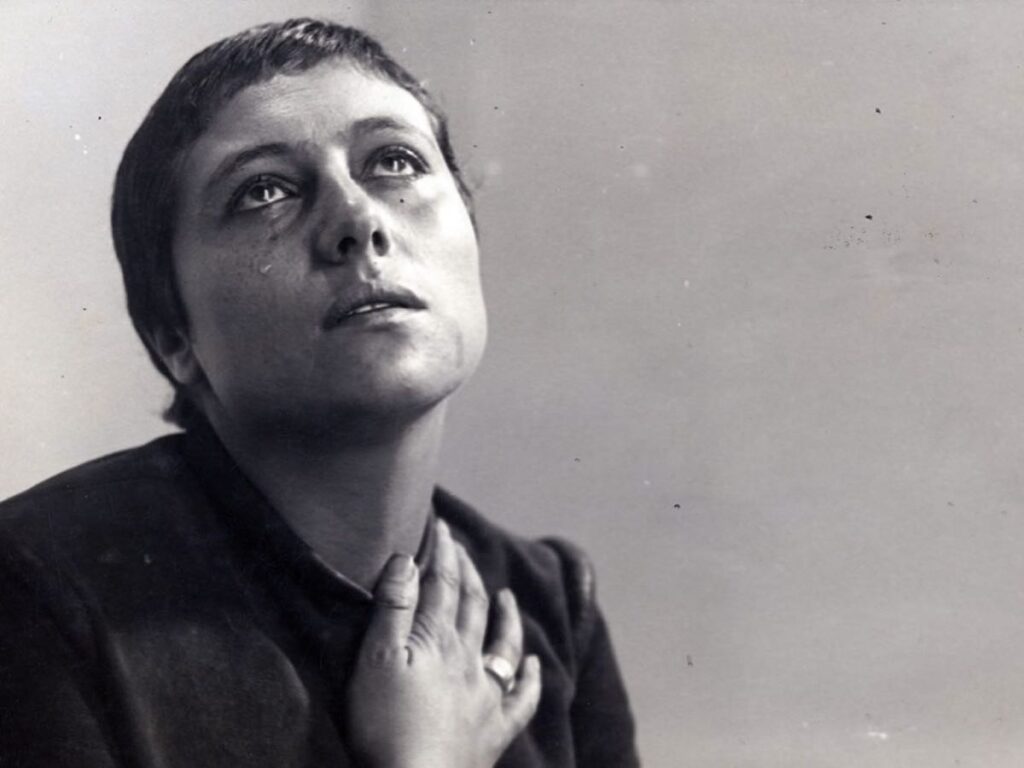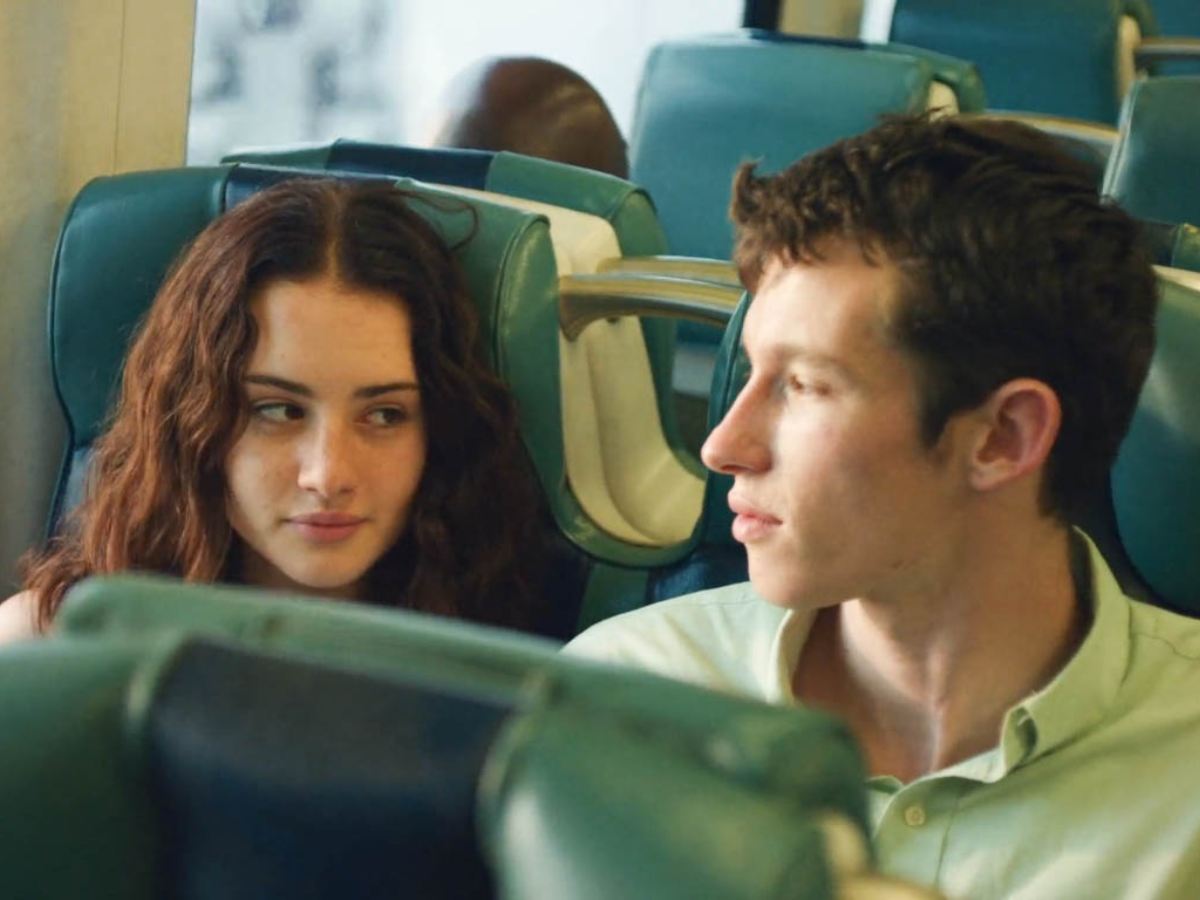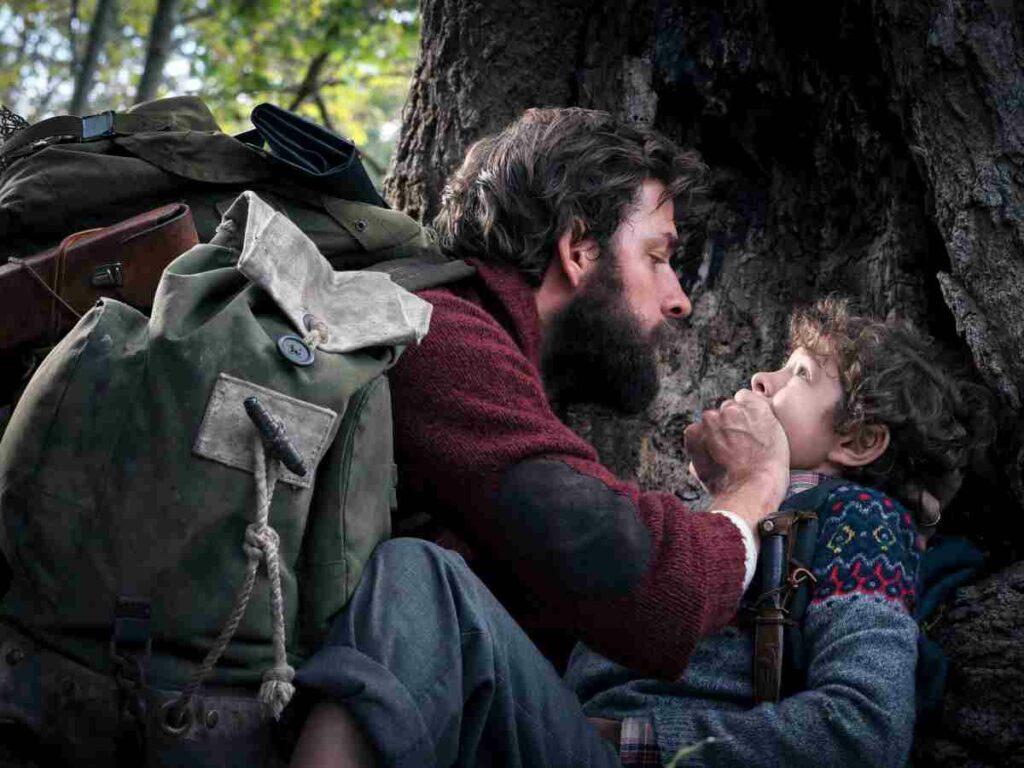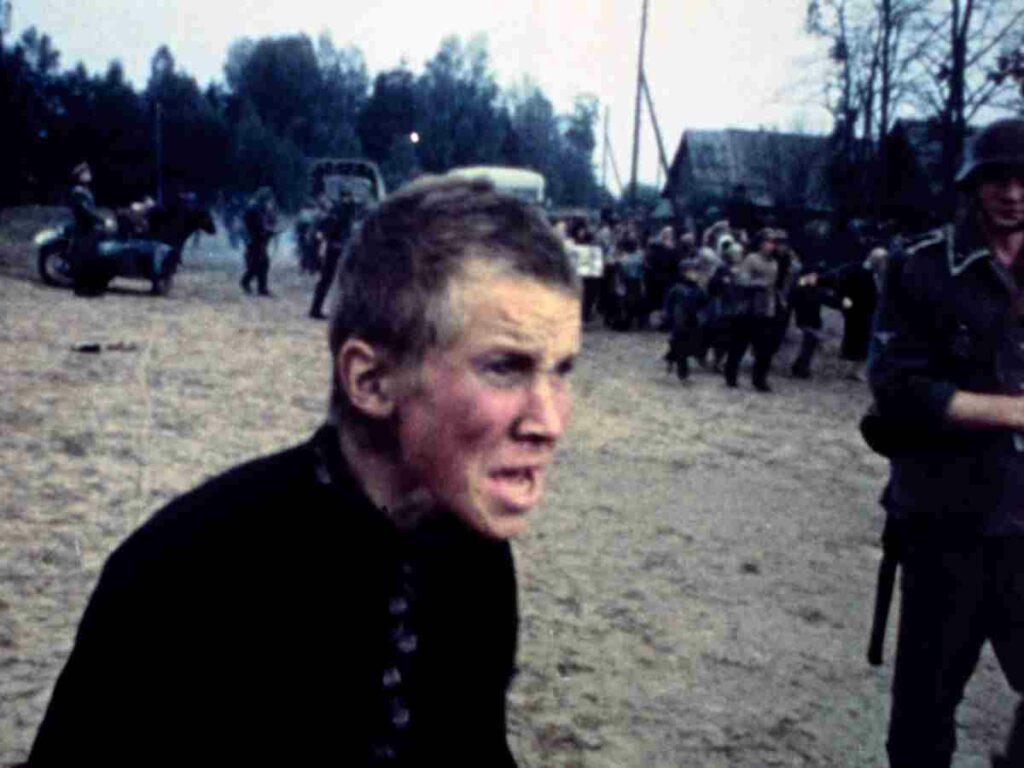Right from the era of Lumiere brothers and Méliès’ cackling moon, the French film industry pioneered filmmaking. From impressionist cinema, poetic realism, to the French New Wave, some of the earliest and most prominent film movements originated here and influenced the cinematic vocabulary worldwide. French cinema is also an international hub for cinema, with visionary auteurs across the globe making films in French language. Film criticism is another pivotal element of French cinema. From André Bazin, Gilles Deleuze to the critics-turned-filmmakers of Nouvelle Vague, French critics have offered frameworks to understand cinema. Bazin’s Cahiers du cinema magazine pushed the discourse on cinema to create modern film theories. At the same time, the magazine’s critics like Godard, Truffaut, Rivette, Chabrol made groundbreaking cinema themselves.
Naturally, it’s a tough task to pick the best from an industry that has consistently defined and redefined the film form. Nevertheless, here are the 30 best French films of all time that are essential viewing:
Best French Movies
30. The Mouth Agape (1974)
Maurice Pialat is the greatest yet underrated filmmaker of the post-French new wave era. His directorial debut Naked Childhood (1969) offered an unsentimental look at the life of a troubled youth. In his third feature film Mouth Agape, Pialat brings a similar approach to look at family life, love, illness and death. The film revolves around Monique, a middle-aged woman dying of cancer. Her family gather around her waiting for the inevitable thing to happen. Pialat’s framing sense, and the slow unveiling of characters’ complexity constantly reminds us of Bergman’s works. Pialat made many great films in his career, mostly exploring turbulent right relationships.
29. Amélie (2001)
Jean-Pierre Jeunet’s visually sumptuous film follows the life journey of a young and lonely Parisian woman. Anchored by a phenomenal performance from Audrey Tatou, the narrative looks at Amélie’s world through her habits and little quirks. It’s more than a sweet, playful feature as Jeunet intimately observes his character’s loneliness and melancholia. Most importantly, the filmmaker makes us root for the charming heroine. Amélie is also a love letter to the postcard beauty of Paris.
28. Army of Shadows (1969)
Army of Shadows is a monumental work in Jean-Pierre Melville’s oeuvre. A master at creating gritty atmospherics, Melville follows a fictional group of French resistance fighters during German Occupation in 1942. Riddled with the filmmaker’s signature sombre tone, the narrative offers an unflinching look at survival during wartime. Our notions of good and evil are constantly challenged. Similar to Le Samouraï, Melville uses silence to a great effort. In fact, a lot of the inner conflicts are brilliantly conveyed through the actors’ facial expressions.
27. Cleo From 5 to 7 (1962)
Agnès Varda is a first-rank French New Wave filmmaker although she’s rarely mentioned in the same breath as Truffaut and Godard. She’s also a wonderful photographer, a perceptive documentarian, and a staunch feminist. Cleo From 5 to 7 was her feature-film debut with a deceptively simple plot. The narrative revolves around a young eponymous character, capturing the two hours of her life as she waits for a possibly life-changing medical test. It’s a deeply introspective film that offers a fascinating snapshot of the society from Cleo’s conflict-ridden perspective.
26. La Haine (1995)
Mathieu Kassovitz’s La Haine (Hate) is a fierce portrait of three young men living in the poverty-ridden housing projects of Paris. Similar to Spike Lee’s Do the Right Thing (1989), the film deals with the universal themes of injustice, institutionalized racism and displacement. Both the movies chronicle the life of their inhabitants in a 24-hour period. Like Do the Right Thing, La Haine doesn’t have a traditional plot structure, it focuses more on the relationship between the three. Eventually, the profound cinematic power is greatly derived from Kassovitz’s vibrant and unorthodox direction.
25. The Fire Within (1963)
Louis Malle made his directorial debut with the noir-ish Elevator to the Gallows (1958). His third film Zazie dans le Métro was a madcap comedy. A striking departure from his first two films, The Fire Within exhibits breathtaking emotional intensity. The film chronicles the last 24 hours in the life of Alain Leroy, a recovering alcoholic in his 30s. Brilliantly led by Maurice Ronet, it is a profound and unsentimental exploration of the character’s existential bleakness. In Oslo, August 31st (2011), Norwegian filmmaker Joachim Trier utilized a similar scenario to make an equally intense drama.
24. The Earrings of Madame De… (1953)
Max Ophüls is renowned for his tracking shots and smooth camera movements. Ophuls’ complex mise-en-scène has been studied by filmmakers all around the world. Ophüls made captivating films in the 1950s, starting with La Ronde in 1950. The Earrings of Madame De.. is the greatest of his artistic expressions. It revolves around a Countess, her expensive earrings, and a complicated love triangle. The screenplay has a very interesting structure as the earrings become the MacGuffin, and are closely linked to the characters’ fate. But it is Ophüls’ magnificent visual sense that makes it a landmark film in cinematic storytelling.
23. Three Colours: Blue (1994)
Polish auteur Kieslowski’s swansong trilogy, Three Colours was made not long before his untimely death in 1996. The colours Blue, White and Red represented the colours in the French Flag. The films’ visual palettes are dominated by the respective colours. In Blue, the best film in the trilogy, Kieslowski explores the weight of grief and loss. Juliette Binoche plays a woman who’s lost her husband and daughter in a car accident. The process of mourning has never been this intimately and agonizingly explored on-screen.
22. My Life to Live (1962)
My Life to Live is a fascinatingly objective yet devastating film-essay on the life of a young Parisian woman who drifts into prostitution. Composed of 12 episodic tales and employing thoughtful means of exposition, the film explores one of recurring Godardian themes: the place of an individual in the modern world who is psychologically traumatized and crushed by social conformity. However, Godard surprisingly strips away psychological motives and social commentary from the narrative.
21. Le Trou (1960)
Jacques Becker’s Le Trou is the greatest among prison-break films. The meticulous and robust planning of the prison inmates reminds us of Rififi. Though the latter is a heist film, both create enormous tension by brilliantly visualizing the characters’ excruciating tasks. Le Trou is based on the true story of four inmates who attempted a daring escape by digging a tunnel through the prison’s sewage system. Becker perfectly details the sheer hardships that go into an escape plan. He also proves to be a master at establishing the character dynamics with respect to their surroundings.
20. Beauty and the Beast (1946)
Jean Cocteau’s celebrated adaptation of Beauty and the Beast is a fairy tale for adults. Unlike the recent works of Guillermo del Toro, Cocteau’s vision isn’t too dark or violent. In fact, what makes it interesting is the way Cocteau adds more depth to the original story alongside a fitting social subtext. Besides, Cocteau’s fantasy is a technical marvel which employs simple practical effects to create a unique world of magic and wonder. Fairytale characters never looked as real and organic. It is also the most accessible work in master filmmaker Cocteau’s oeuvre.
19. The Piano Teacher (2001)
Michael Haneke’s disturbing psychodrama is an adaptation of Elfriede Jelinek’s 1983 novel. The film revolves around a 40-year old music teacher named Erika. She works at the Vienna Conservatory and lives with her domineering mother.Erika’s lonely and repressed life gradually unearths her dangerous sadomasochistic desires. The Piano Teacher is a deep dive into the psychological torment of an individual. It’s an extremely hard film to watch, but no one deals with emotions in an unflinchingly raw manner like Haneke.
18. Belle de Jour (1967)
After working in the Spanish and Mexican film industries, renowned director Luis Buñuel started working in the French film industry from the mid-1960s. Belle de Jour is one of Buñuel’s latter-day classics with a very nuanced style and approach. The narrative follows a young newlywed wife, played by Catherine Deneuve. Her repressed sexual fantasies gradually lead her to work in the daytime as a prostitute. Belle de Jour is less of an erotic drama, and focuses more on one’s desires, deepest fears, and double lives.
17. Breathless (1960)
Breathless was the first feature of critic-turned-filmmaker Jean-Luc Godard. Its innovative staging and flashy visual techniques brought international attention to French New Wave cinema. Breathless’ sparse plot is centred on Michel, a reckless wandering criminal. Michel was played by the super-cool Jean-Paul Belmondo, who later became a star actor. Though influenced by early American gangster movies, Godard’s direction has a raw, documentary feel to it. It’s largely energy and style over substance. The film became a pivotal cinematic work that influenced generations of international filmmakers. As Roger Ebert said,
“Modern movies begin here with Breathless.”
16. Les Diaboliques (1955)
Henri-Georges Clouzot’s riveting suspense thriller caught the attention of the Master of Suspense himself. It was said that Hitchcock wanted to adapt the source novel on which Les Diaboliques was based. In fact, Clouzot and Hitchcock are occasionally mentioned together for their similar methods and style. Both the filmmakers undertook macabre subject matters with a dash of black humour and absurdity. Les Diaboliques revolves around the mysterious murder of a schoolteacher. There are several shifts in tone and narrative that are handled brilliantly. The film has one of the most diabolical endings ever.
15. Napoleon (1927)
French Impressionist cinema may not be as well defined as film movements in the later decades. Yet its emphasis on emotional representation inspired the development of various cinematic techniques. The important filmmakers of the movement were Abel Gance, Marcel L’Herbier, and Louis Delluc. Gance’s Napoleon (1927) in particular introduced a lot of innovative frameworks that strengthened French Impressionism. The famous eponymous hero’s life from school days to the French Revolution is depicted in the narrative. Napoleon is one of the first films to introduce wide-screen shots to enhance the scale of the picture. Gance also used multiple cameras to simultaneously shoot the movements. It’s a milestone of its period and the best way to appreciate it is to watch the 5 1/2 hour-long version.
14. Au Hasard Balthazar (1966)
Balthazar is one among the three wise men in the Bible. In Bresson’s heartbreaking drama, Balthazar is a donkey whose burdensome life reflects mankind’s cruelty and ignorance. The narrative unfolds in an episodic manner as Balthazar is passed onto different owners. Bresson’s works are hard to categorize or explain. And it’s even harder to come up with a single interpretation of the events. One of the most idiosyncratic discourses on the human condition, it will yield a different meaning in every revisit.
13. L’Atalante (1934)
The young genius filmmaker Jean Vigo passed away at an untimely age of 29. L’Atalante was his only feature-length picture. The film tells a simple story of newlyweds who start their life in a barge, floating the Seine. Vigo captures the ups and downs in their relationship dynamics with a dash of eroticism and poetic realism. L’Atalante is also a fine portrait of the social classes in Depression-era Paris. Even Vigo’s shorter works, À propos de Nice and Zero For Conduct show his auteurial touch which was tragically cut short by his early demise.
12. Last Year at Marienbad (1961)
Alain Resnais’ elusive experimental feature is praised as well as disdained for the same reason: viewers don’t know what to make of it. Last Year at Marienbad is set in a baroque hotel, where a man determinedly tries to woo a refined woman. But things aren’t that simple as we get lost in the labyrinthine narrative construction. Full of hypnotic compositions, the film is a haunting examination of memory. It was a huge influence on filmmakers like Kubrick, David Lynch, and Peter Greenaway.
11. Le Samouraï (1967)
Born Jean-Pierre Grumbach, his pseudonym ‘Melville’ was adopted after the filmmaker’s favourite American author Herman Melville. Jean-Pierre Melville fought in the French resistance during WWII, and started making films in the late 1940s. He was heavily influenced by the Hollywood gangster pictures of the 1930s and film noir of the 1940s. Yet Melville went on to make idiosyncratic crime dramas that redefined the genre on the whole. One great example of this is the charming Alain Delon-starrer Le Samouraï. It’s a tale of an uber cool and calm hitman which doubles up as a riveting thriller as well as a character study.
10. Rififi (1955)
Jules Dassin’s Rififi is the quintessential heist film along with Huston’s Asphalt Jungle (1950). Dassin directed brilliant film noirs like Brute Force and The Naked City. After he was blacklisted from Hollywood, he moved to work in France. Though modestly stylized, Rififi is best known for its methodical pace and detailed visualizations. The 30-plus minute heist sequence, which largely unfolds in silence, unveils Dassin’s great mastery over the form. This is a thriller in the truest sense of the word and has no other pretensions.
9. Playtime (1967)
The comedic genius Jacques Tati is more of an architect than a filmmaker. This is evident in the structural precision with which he stages his gags. In Playtime, Tati’s unique character Monsieur Hulot gets lost among the sleek and clean spaces of modern buildings. Tati’s intention was to explore human traits in the modern environment. Critics called it a ‘ballet of mayhem’. In order to conceive such hilarious mayhem, the filmmaker created Tativille, a huge set covering more than 15,000 square metres. Though a formalist masterpiece, Playtime is not an ideal first film to watch in Tati’s filmography. The best starting point could be Monsieur Hulot’s Holiday (1953).
8. Z (1969)
The Greece-born French filmmaker Costa-Gavras’ Z was one of the most influential political films alongside Battle of Algiers. Shot like a documentary, Z is a splendid investigative procedural surrounding the assassination of a popular socialist activist. Based on a book by Vassilis Vassilikos, the narrative was loosely inspired by the killing of a Greek leftist politician. However, the chain of events portrayed in Z could happen in any country at any time. Apart from the deeply resonating message, the film’s visual design still remains extremely impressive.
7. 400 Blows (1959)
François Roland Truffaut and Jean-Luc Godard were the frontrunners of the French New Wave. While Godard experimented with the form, Truffaut came up with invigorating storytelling techniques. 400 Blows — the defining work in Truffaut’s oeuvre and French New Wave — remains a testament to his storytelling skills. The film revolves around a troubled and misunderstood Parisian boy. Jean-Pierre Léaud in the central role perfectly evoked adolescent frustration and rebellion. Truffaut went on to make three more iconic films on the central character.
6. The Rules of the Game (1939)
Renoir’s The Rules of the Game was the greatest social comedy which critiqued the Parisian bourgeoisie society. However, it turned out to be a big box-office failure, and was eventually banned by the occupying Nazi forces. The film doesn’t tell a conventional story. It doesn’t have a protagonist and ends without a proper climax. Renoir’s focus is more on the atmosphere the characters share, i.e., the carefree aristocratic class. Though Renoir satirizes the characters’ hypocrisy, he also brilliantly humanizes them. It has one of the most-quoted film dialogues:
“In this world, there is one awful thing, and that is that everyone has his reasons.”
5. The Wages of Fear (1953)
Henri-Georges Clouzot’s greatest suspense film is based on a novel by Georges Arnaud. The film tells the story of four European men, stuck in a small South American town. They are eventually lured to do a big job that also comes with a huge risk. They are made to carry the volatile nitro-glycerine to put out a fire at the American-owned oil company. The Wages of Fear opens as a stark character study of the four men. Gradually it morphs into a thrilling adventure as they encounter challenges on the road. William Friedkin made an equally great remake of the original.
4. The Grand Illusion (1937)
Set in the backdrop of the First World War, The Grand Illusion was one of the greatest humanist films. Made by the cinema’s greatest artist, Jean Renoir, the narrative revolves around French officers imprisoned in German POW camps. Renoir’s movie, however, defies the categorization of war movies. Unlike The Bridge on the River Kwai or Stalag 17, the narrative is emotionally complex and presents intriguing character dynamics. Moreover, Renoir’s deep-focus cinematography adds to the vibrant drama. The Nazi minister of Propaganda Joseph Goebbels was enraged by the humanist message, and called it ‘Cinematic Public Enemy No. 1’.
3. Children of Paradise (1945)
Marcel Carné worked as a journalist and film critic before turning into a filmmaker. Alongside Jean Vigo, Julien Duvivier, and Renoir, he is a leading proponent of the poetic realist cinema. These were mostly epic melodramas which touched upon the social climate of the time. Children of Paradise is Carné’s best-known film that’s set in the 1820s Parisian theatrical world. The story revolves around four different men who vie for the affection of a free-spirited female artist. Renowned poet and screenwriter Jacques Prévert wrote the film. Carné and Prévert’s collaborative efforts reached their zenith with Children of Paradise.
2. A Man Escaped (1956)
Robert Bresson distils all filmic elements to create spiritual cinema, where he never emotionally manipulates his viewers. A Man Escaped, as the title reveals, is a prison-break drama. But Bresson’s stark minimalism — that underlines every aspect of the film, from the narrative and visuals to the editing and performances — offers an unprecedented cinematic experience. Bresson’s works never make his viewers superficially feel for the characters. In Fontaine’s quest to become a free man, we share his existential experiences and gradually learn to profoundly empathize with him.
1. The Passion of Joan of Arc (1928)
If Abel Gance’s Napoleon is best known for its awe-inspiring vision, Carl Theodor Dreyer’s Joan of Arc is known for its radical austerity. Danish filmmaker Dreyer’s commercial success with Master of the House (1925) made a French production company offer him this project. Though Passion of Joan of Arc turned out to be a commercial failure, it became an emblematic work of the silent-era and cinema in general. It was the finest film of the 20s decade. Keeping up with the impressionist themes, it prioritized the character’s painful mental state over objective reality. Dreyer’s treatment of space, movement, and expression had a huge influence on the subsequent generations of filmmakers.
Conclusion
France is the beacon of the cinematic medium. These are some of the greatest French films that have impacted multiple generations of filmmakers. The number of gems the industry has spawned in its twelve decades of cinema is glaringly staggering. I haven’t included French documentaries in the list, which is a separate eco-system comprising great many radical works. What are your favourite works from French cinema? Do you agree with our rankings? What are your top #3? Share your list in the comments below.




